When spring arrives with bursts of color and scent, one of my favorite perennials appears — star-shaped columbine. It grows in my woodland garden amid other delicate wildflowers, such as bloodroot (
Sanguinaria canadensis), trillium and speckled trout lily. Columbine grows happily in dappled shade, and its orange and yellow flowers appear early in the season, just as the upper canopy leafs out, so it appears around the time that hostas are unfurling their cupped leaves. Planted in masses, the colorful blooms are a standout in shade or sun.
The genus includes about 70 species, and there are many types adapted to regions and climates in the Western Hemisphere. Some are suitable for sunny rock gardens and mountain slopes; others prefer shade. And then there are the hybrids with names like Songbird, Music, Winky and Swan — series of plants developed by breeders for their superior coloration and flower forms.
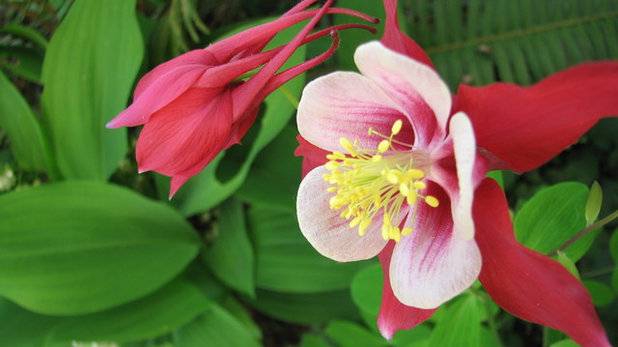
High Tech Turf & Trees
Botanical Name: AquilegiaCommon name: Columbine
Origin: Native to the Northern Hemisphere
Where it will grow: Hardy to -40 degrees Fahrenheit (USDA zones 3 to 8; find your zone)
Water requirement: Dry to moist soil, depending on species
Light requirement: Sun to partial shade
Benefits and tolerances: Attracts pollinators; deer and rabbit resistant; disease free
Seasonal interest: Late spring
When to plant: Spring to fall
There are many hybrids available —
‘McKana’s Giant’ is one of the most beautiful and is an All-America Selections winner. Plants grow 24 to 30 inches tall, with bicolor flowers on strong stems that are great for cutting. Order seeds to start indoors and transplant the seedlings into your garden in early spring.
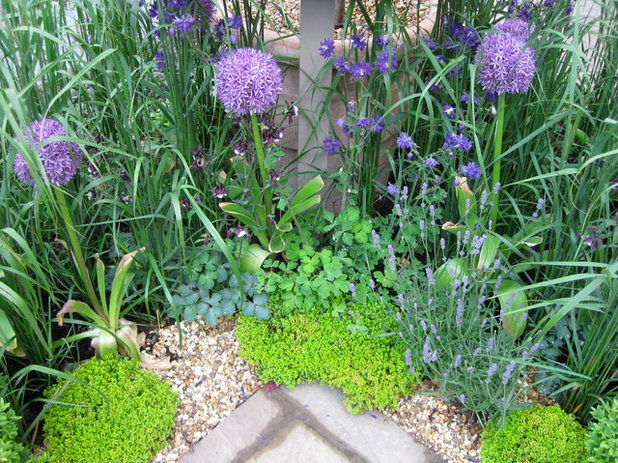
Paintbox Garden
Distinguishing traits. As a garden designer, I look primarily at foliage and consider the shape and texture of leaves carefully when combining plants. To me, columbine offers not only beautiful blooms, but its lobed leaves and mounded form make a good base for a layered garden in partial shade.
Native species such as
Canada columbine (
Aquilegia canadensis) and
Rocky Mountain columbine (
Aquilegia caerulea) are important plants for habitat diversity, and their flower nectar supports a wide array or pollinators — including hummingbirds.
The flowers are airy and semitransparent, creating a painterly effect. Here a double purple columbine creates a cool accent to purple alliums.
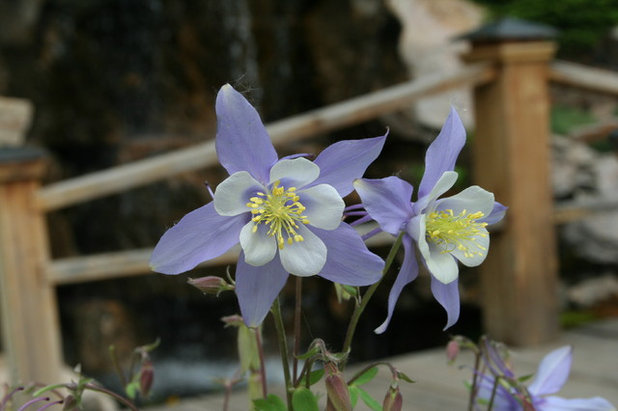
Kim Gamel
Some of the new hybrids are truly amazing, with long spurs and sharply pointed, reflexed petals surrounding an inner display of white, pink, yellow, blue or purple petals arranged around a yellow stamen and pistil.
Lovers of blue will swoon over
‘Bluebird’ (Songbird series), zones 3 to 9, a hybrid of the Colorado columbine, and fans of purple may like
‘Clementine Dark Purple’, a double flower in the Clementine series.
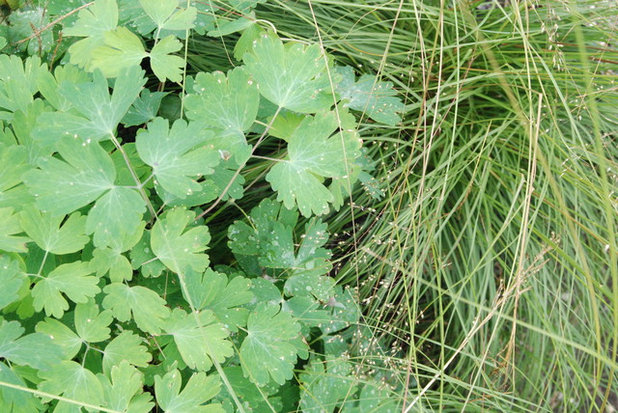
Paintbox Garden
How to use it. With its neat, compact form and deeply lobed foliage, columbine makes an effective ground cover when paired with plants that like the same growing conditions and have widely diverse leaf shapes. For shade try growing it with carex or variegated pulmonaria, or try putting it with a diminutive hosta, like ‘Mouse Ears’.
These make an excellent choice for cottage gardens, too. In sunny borders pair them with Lady’s Mantle, dianthus, lavender and common chives.
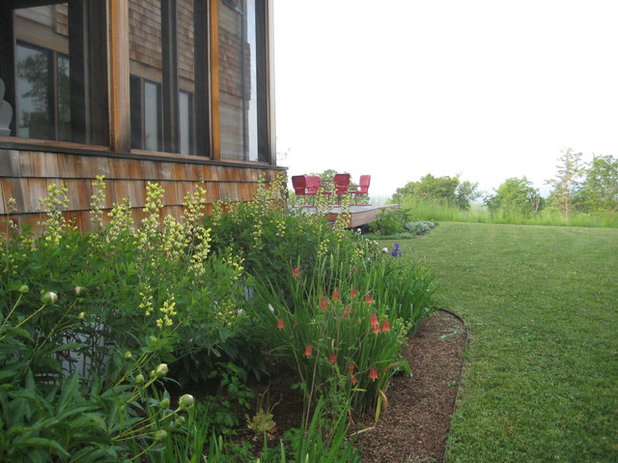
Larkspur Design
For an informal border, the wonderful orange hues of columbine can offer a burst of color during the season. Bonus: Columbine is very low maintenance — rabbits and deer leave it alone, and it tolerates poor soils.
If you like orange and enjoy growing native plants, you might like
‘Little Lanterns’, which is a dwarf form of
A. canadensis; it grows only 8 inches tall in sun to partial shade.
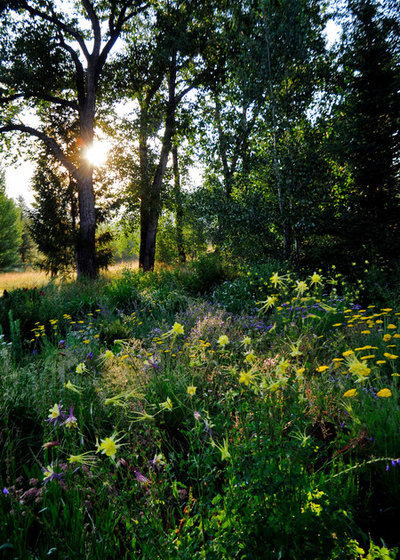
HABITAT Landscape Architecture
Gardeners who have shady woodlands can create real drama with drifts of tall columbines; they’ll move with the wind on stems that can reach up to 2 feet or more. Their unusual flower shapes are eye catching, and they shine in a naturalistic setting.
Planting notes. Most types of columbine prefer fertile soil with adequate moisture; the Alpine species is an exception. Put them in a rock garden with similar plants that take full sun, in stony ground that’s sharply drained. Look closely at the plant tag before you buy to make sure you’ve got the right growing conditions.
The plants can attract caterpillars, leaf miners and aphids, so keep an eye out; powdery mildew can sometimes be a problem too.
More: Let Nature Inspire Your Landscape: Ideas for a Woodland Garden





